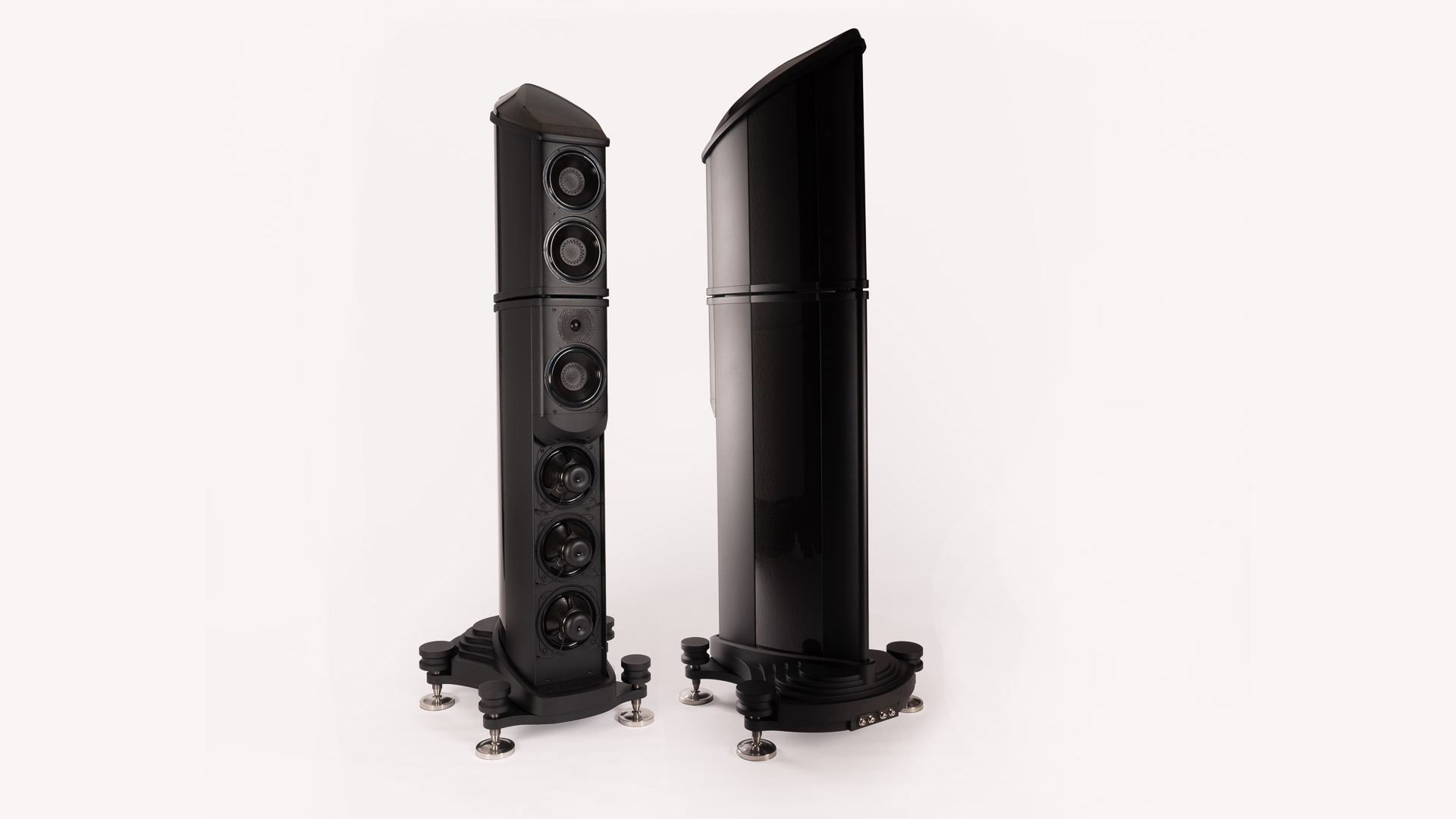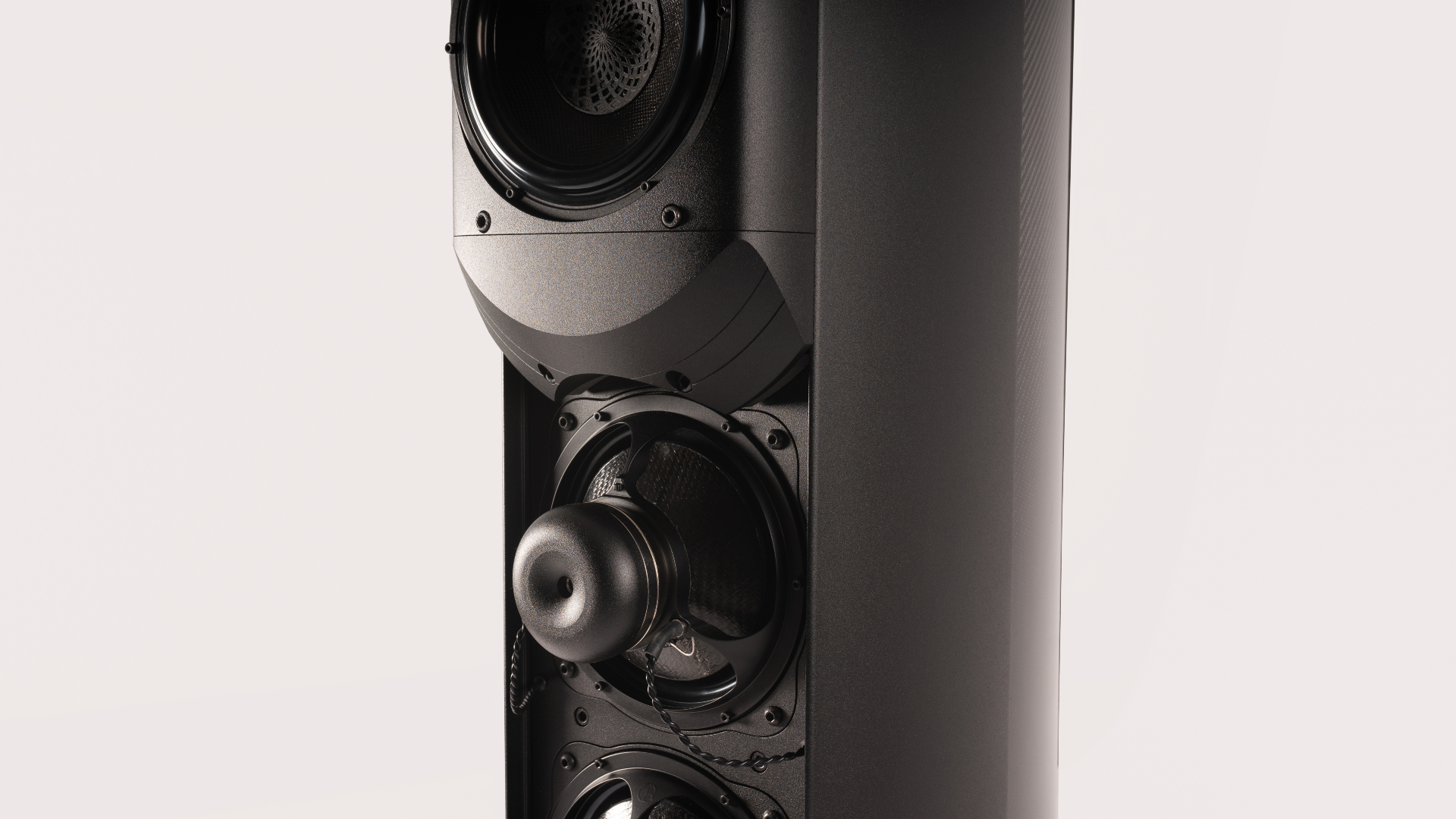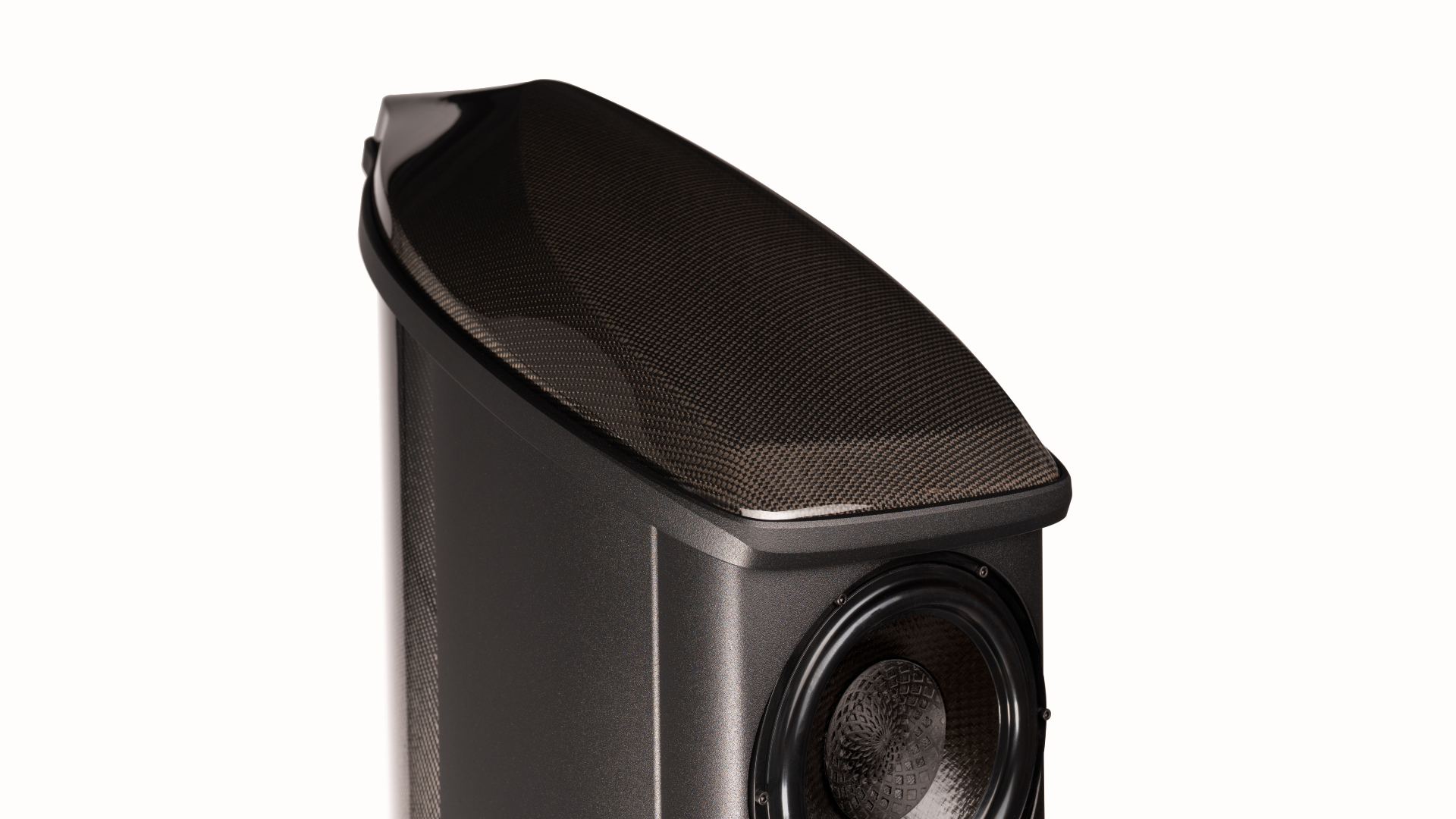Wilson Benesch announces striking £98k Omnium tower speakers
The South Yorkshire firm's new floorstanders are a premium 2.5-way proposition

A new addition to the Wilson Benesch reference loudspeaker line is here, so without further ado, let's meet Omnium.
As you can see, each 2.5-way tower sports a total of seven drivers: a 25mm (1”) WB Fibonacci hybrid tweeter, a 170mm (7”) WB Tactic 3.0 bass high unit, a 170 (7”) WB Tactic 3.0 midrange driver, a 170 (7”) WB Tactic 3.0 bass low and three (yes, three) 170mm (7”) WB Isobaric Drive System bass low drivers.
Omnium is a celebration and continuation of the modular design that Wilson Benesch added to its design philosophy when it released the Odyssey Range, in 2001, but plenty of features from the firm's 2018 high-end Eminence proposition have also been included.
Omnium (from the Latin 'of all', rather than a nod to track cycling) is a reference to the three decades of research and development that came before it, but although Omnium is a nod to all of this, the firm tells us it is also marks the dawn of the next generation of materials and technologies developed through a collaborative research and development project over four and a half years – SSUCHY (a welcome abbreviation of 'Sustainable Structural & Multifunctional Biocomposites from Hybrid Natural Fibres and bio-based Polymers').
The main aim? To create the world’s first ‘green loudspeaker’. The pan-European SSUCHY Project began in 2017 when Europe’s Horizon 2020 invested €7.4-million to enable 13 Universities, 4 SME’s and several Blue Chip companies to come together, collaborate and innovate. Cutting edge materials to replace oil based non-recyclables was a chief aim.

Hi-fi enthusiasts will know that in 1994, Wilson Benesch's A.C.T. One loudspeaker disrupted the audio market (the curved carbon composite flanks, sloping top and metal baffle were radically different from the wooden enclosures of the day) and the honecycomb Nomex core and Carbon Fibre skins are still here, but aided by the company's pioneering Resin Transfer Moulding (RTM) technique that enabled the launch of the Odyssey range, in 2001. Add to this the Vacuum based systems (VRTM) in 2011, heralding Wilson and Benesch's Geometry series and you might think we're nearly there – but not at all; not by a long shot.
Now, thanks to this latest project, the South Yorkshire firm claims that the scientific understanding of how certain materials behave at the microscopic level has been tested and validated. The outcome? The new A.C.T. 3Zero Monocoque, constructed from natural materials that are renewable, sustainable and almost entirely free of oil-based material use. Even the resin that the previous generation carbon fibre monocoque used has been replaced with a Bio Resin.
The latest hi-fi, home cinema and tech news, reviews, buying advice and deals, direct to your inbox.
This advanced composite technology structure is, says the company, the largest single component in the Wilson Benesch loudspeaker enclosure (initially seen at the heart of the astronomically priced Eminence loudspeaker).
Furthermore, Wilson and Benesch tells us independently supplied data shows that in terms of both stiffness and damping, the monocoque delivers significant superior damping capabilities over the previous generation A.C.T. Monocoque.
To further emphasise the firm's commitment to sustainability, the new A.C.T. 3Zero Monocoque at the heart of the Omnium now requires just half the energy that was used to produce the previous generation monocoque, too.
The latest iteration of Wilson Benesch tweeter technology builds upon the 2012 Semisphere tweeter (the world's first hybrid tweeter dome design based on carbon fibre) design pushing it into the next generation. The audio specialist's Fibonacci tweeter faceplate is formed from a carbon fibre composite structure, creating a geometrically optimised waveguide that's tailored exactly to the unique output of the Silk-Carbon Hybrid tweeter dome. This faceplate and the motor is in turn decoupled from the rest of the tweeter chassis, promising not only ruler-flat frequency response and ultrawide dispersion characteristics, but also optimal frequency and timing integration with the Tactic 3.0 midrange drive unit – a new generation of drive unit but one that retains the isotactic polypropylene cone to boast optimal balance of stiffness and damping.
This unique blend of material properties allows Wilson Benesch to maintain the crossover-free, directly amplifier coupled design for the midrange drive unit. The direct link maintains, claims Wilson Benesch, zero-phase distortion to "open the heart of the music".

Inspired by solutions found in nature and interpreted by Fibonacci’s formula, the new Fibonacci element results in a drive unit that promises text-book perfect roll off without any inductor, extended frequency response up to 4KHz and a flat frequency response within its operating range.
The principle low frequency load of the Omnium is delivered by a series of Isobaric Drive Systems (IDS). Here, two drive units combine to create a clamshell formation, with one drive unit diaphragm facing the other working in a push-pull formation. The IDS is responsible for reproducing "incredibly tight and controlled bass response" that is perfectly integrated with the midrange Tactic 3.0 drive unit.
Elsewhere, you're also getting Wilson Benesch's trademark sloping Carbon Fibre Composite Top (above), and each speaker foot is hewn in-house by Wilson Benesch from a single billet of aluminium, to reduce an 80kg solid billet by more than half, to create a single 38kg Omnium loudspeaker foot. This formidable component governs over the energy above by way of the 14mm tie bolts that generate a metric tonne of compressive pressure through the Omnium enclosure.
The Wilson Benesch Omnium speakers are available to buy now, priced at £98,000 per pair (roughly $133,000 or AU$185,400, where sold) and can be shipped immediately. Take note though, at 120kg, those shipping costs won't be cheap...
MORE:
A little rich for the blood? Here's a list of the best budget hi-fi speakers
You'll find even more to choose from on our list of the best speakers
But there's no harm in looking at 12 of the world's most expensive high-end speakers and 10 of the craziest-looking high-end hi-fi products on the planet
Becky has been a full-time staff writer at What Hi-Fi? since March 2019. Prior to gaining her MA in Journalism in 2018, she freelanced as an arts critic alongside a 20-year career as a professional dancer and aerialist – any love of dance is of course tethered to a love of music. Becky has previously contributed to Stuff, FourFourTwo, This is Cabaret and The Stage. When not writing, she dances, spins in the air, drinks coffee, watches football or surfs in Cornwall with her other half – a football writer whose talent knows no bounds.
